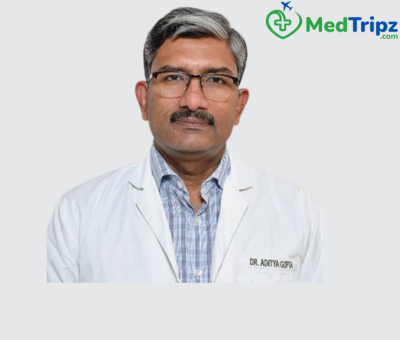نوع الإجراء
جراحيمدة الإجراء
3-4 ساعاتأيام الإقامة في المستشفى
5 أيامDeep Brain Stimulation (DBS) is a surgical procedure designed to alleviate symptoms of neurological disorders such as Parkinson’s disease, dystonia, and essential tremor. It involves implanting electrodes in specific brain regions to modulate abnormal neural activity. When paired with a non-rechargeable battery, the system provides continuous stimulation without requiring frequent maintenance. This option is ideal for patients seeking a low-maintenance solution while still benefiting from the therapeutic effects of DBS.
Non-rechargeable DBS systems are powered by an implantable pulse generator (IPG) containing a fixed battery. This system provides a steady supply of electrical impulses to the brain, offering relief from motor symptoms and other associated issues. The battery life varies depending on the stimulation settings and usage, typically lasting 3–5 years, after which it can be replaced through a minor surgical procedure.
The procedure involves the placement of electrodes into targeted areas of the brain, such as the subthalamic nucleus or globus pallidus, depending on the condition being treated. The electrodes are connected to the IPG, which is usually implanted under the skin near the collarbone. Once activated, the system delivers electrical impulses that regulate brain activity, improving motor control and reducing symptoms like tremors, stiffness, and slowed movement.
Non-rechargeable DBS systems provide several benefits, including ease of use and reduced maintenance. Patients do not need to recharge the device daily, allowing for a hassle-free experience. This system is particularly suitable for individuals with limited dexterity or those who prefer a simpler management approach. Additionally, non-rechargeable batteries offer consistent performance without the risk of charge-related fluctuations.

رئيس قسم جراحة المخ والأعصاب وجراحة الجهاز العصبي المركزي والرئيس المشارك لشركة Cyberknife

المدير التنفيذي ورئيس قسم جراحة الأعصاب

بكالوريوس الطب والجراحة، ماجستير في الجراحة العامة، ماجستير في جراحة الأعصاب، جراح أعصاب، جراح العمود الفقري (أعصاب)
DBS surgery is performed in two stages. The first stage involves implanting the electrodes in the brain under general or local anesthesia, depending on the patient’s condition. The second stage entails placing the IPG and connecting it to the electrodes. After surgery, patients undergo a programming phase where the stimulation settings are customized to their needs. Recovery typically includes a few weeks of healing, followed by adjustments to optimize symptom control.
Not all patients are candidates for non-rechargeable DBS systems. The choice depends on factors like age, lifestyle, and the severity of the condition. Neurologists and neurosurgeons evaluate each patient to determine the most appropriate system based on their medical history and daily activities. Non-rechargeable systems are often recommended for older patients or those unable to manage rechargeable devices.

نيودلهي, الهند

جورجوجرام, الهند
التوجيه الصادق والدعم الموثوق والجهد السلس.
تزويدنا
بالتقارير


احصل على
الآراء الطبية


ما قبل الوصول
ترتيبات


تأشيرة
يدعم


باب المساعدة
العلاجات


العودة
متابعة

